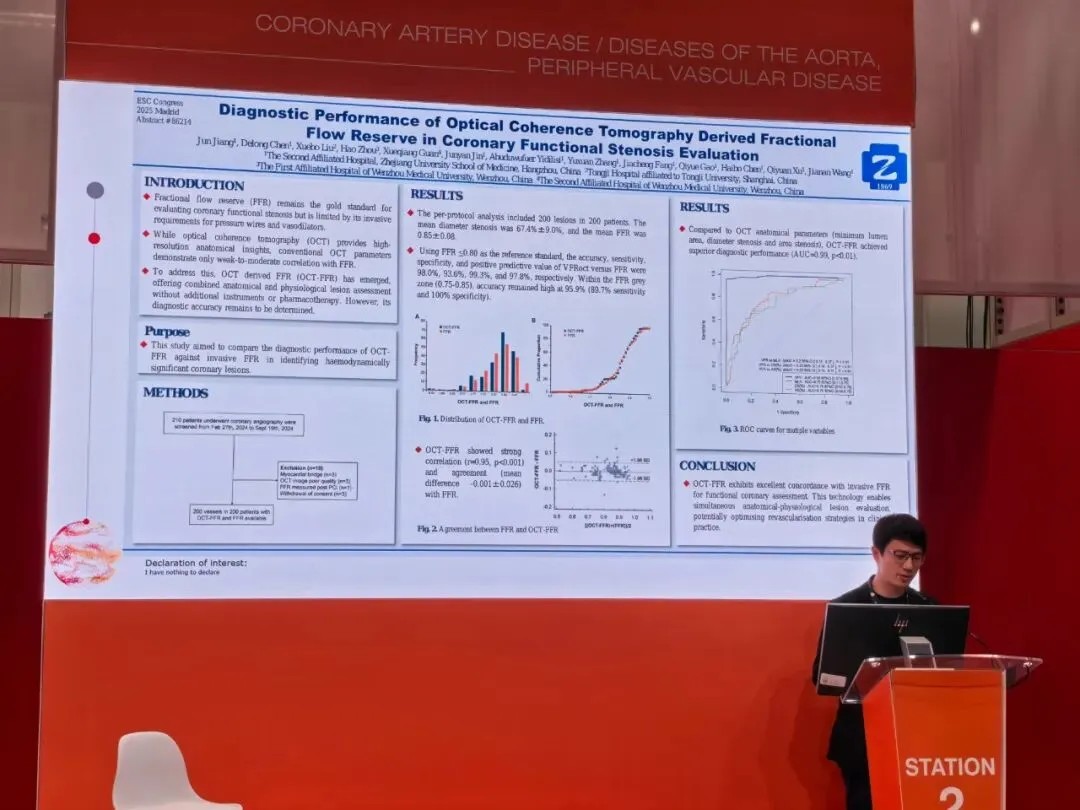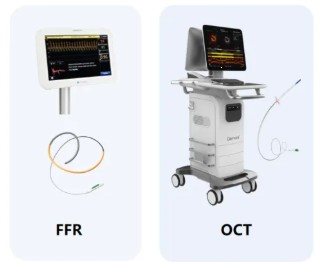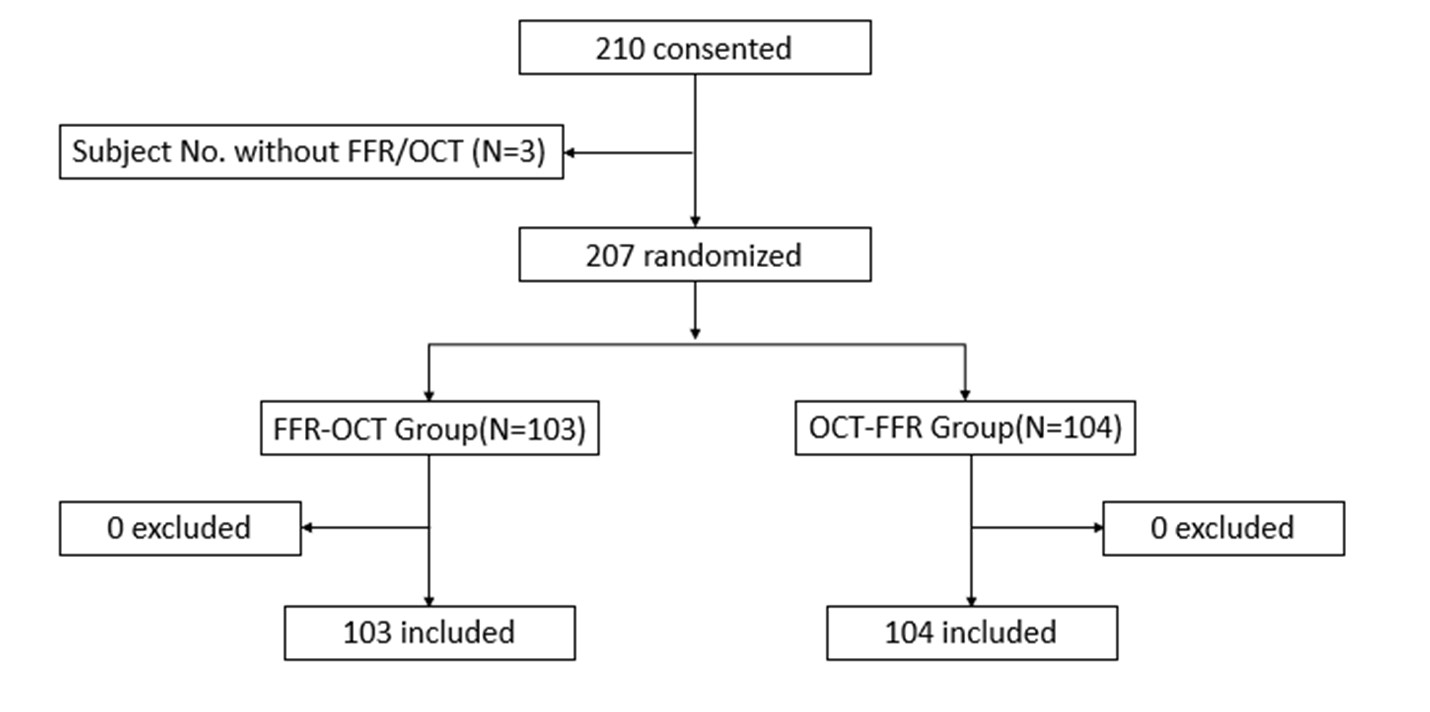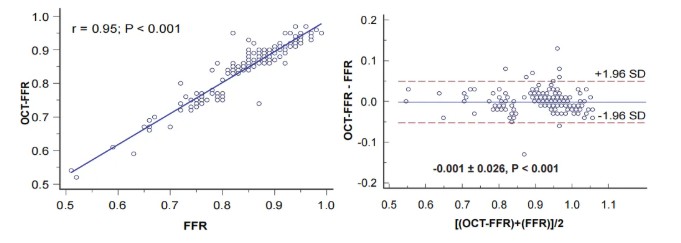
ESC 2025: Researchers from SAHZU (@ZJU_Medicine) Unveil Groundbreaking OCT-FFR Data
Madrid, Spain – September 1, 2025 – At the European Society of Cardiology (ESC) Congress 2025 in Madrid, the Second Affiliated Hospital of Zhejiang University School of Medicine (SAHZU) reported landmark clinical results on an optical coherence tomography–based functional assessment technology—OCT-derived fractional flow reserve (OCT-FFR)—advancing precise diagnosis for coronary artery disease.
Presented in the Chronic Coronary Syndromes: Imaging session, Prof. Jun Jiang (SAHZU) delivered the talk titled “Diagnostic performance of optical coherence tomography derived fractional flow reserve in coronary functional stenosis evaluation.” The study showcased strong concordance between OCT-FFR and invasive, wire-based FFR for identifying hemodynamically significant lesions.


To overcome this gap, OCT-FFR was developed, combining micro-anatomical imaging with physiology-based lesion evaluation—without additional consumables or invasive steps. This innovation aims to transform how interventional cardiologists plan and optimize PCI procedures.
Study Design
● Type: Prospective, multicenter, single-arm clinical trial.
● Population: 210 patients undergoing invasive coronary angiography across four top Chinese centers.
● Methods:
○ All patients were randomized (N = 210).
○ Three patients did not undergo FFR/OCT examination (N = 3).
○ A total of 207 patients underwent both FFR and OCT examinations.
■FFR–OCT Group: N = 103 (0 withdrawals; 103 completed).
■OCT–FFR Group: N = 104 (0 withdrawals; 104 completed).
● Algorithm: The OCT-FFR algorithm integrates lumen segmentation, bifurcation detection, and fluid dynamics modeling to calculate pressure gradients across lesions.
● Primary Endpoint: Diagnostic accuracy of OCT-FFR compared with invasive FFR.

● Concordance: OCT-FFR showed excellent agreement with invasive FFR. The mean values were identical (0.85 ± 0.08 for both methods), with a strong correlation (Pearson r = 0.95, P < 0.001). Bland–Altman analysis further confirmed high consistency (mean difference −0.001 ± 0.026, P < 0.001).

● Diagnostic Performance (using invasive FFR ≤ 0.80 as the threshold for hemodynamically significant stenosis):
○ Accuracy: 98.0% (95% CI: 95.0–99.5)
○ Sensitivity: 93.6% (95% CI: 82.5–98.7)
○ Specificity: 99.3% (95% CI: 96.4–100)
○ Positive Predictive Value: 97.8% (95% CI: 86.2–99.7)
○ Negative Predictive Value: 98.1% (95% CI: 94.4–99.3)
● Comparisons: Compared with methods that did not incorporate individualized blood pressure information (accuracy 90.0%) and those without MLA optimization (accuracy 93.0%), the new OCT-FFR algorithm achieved significantly higher diagnostic accuracy (both P < 0.01).
● Practical Value: With a single OCT pullback, the system simultaneously provides both anatomical and physiological assessments. Diagnostic accuracy against invasive FFR reached 98.0%, underscoring the feasibility of rapid and reliable computation in a real-world, prospective cohort.
This study highlights OCT-FFR as a transformative technology. By enabling ischemia-specific physiological assessment alongside micro-level anatomical imaging—including vulnerable plaque characterization—OCT-FFR offers cardiologists a fast, reliable, and minimally invasive solution to optimize PCI planning and improve patient outcomes.
Leave A Message
Scan to WhatsApp :
